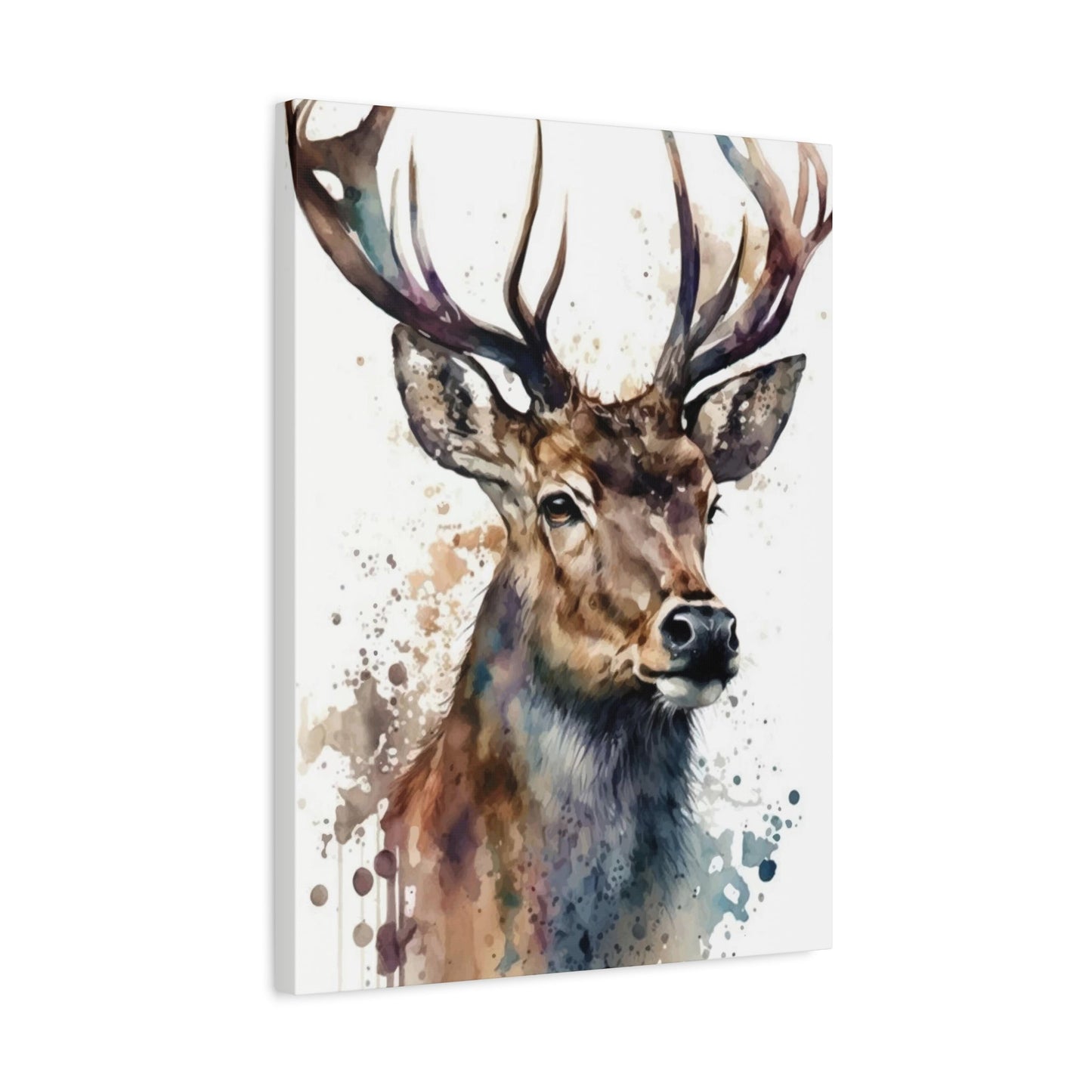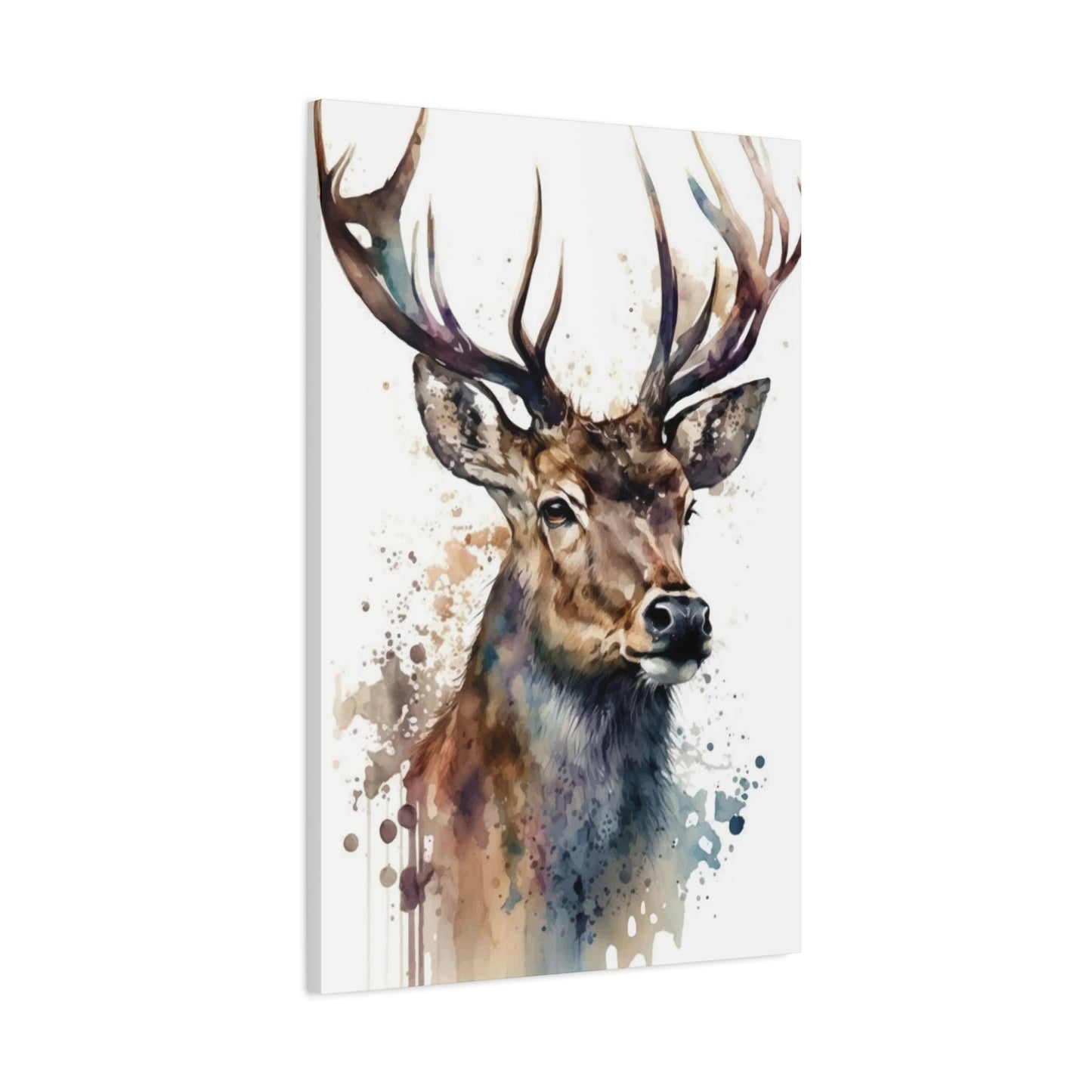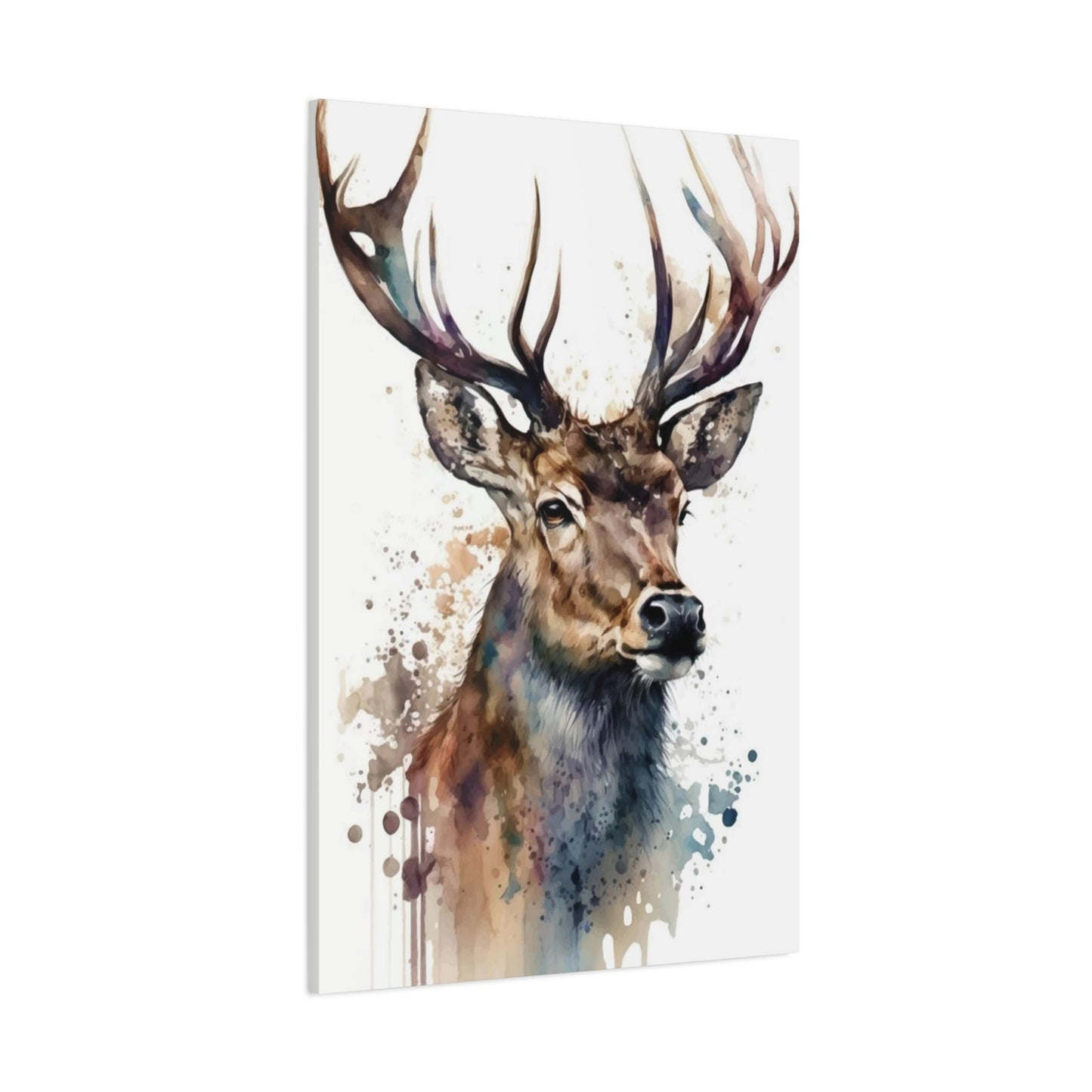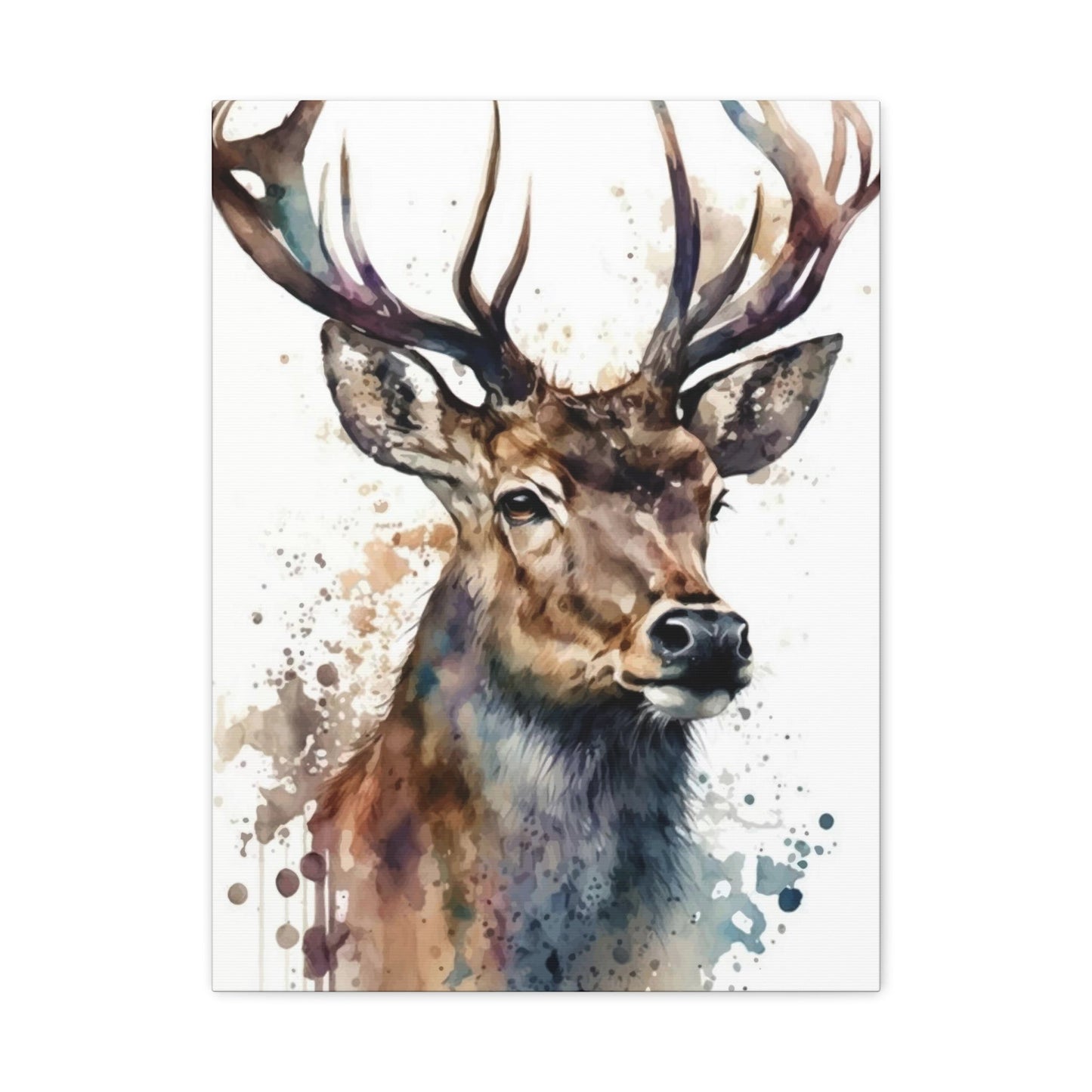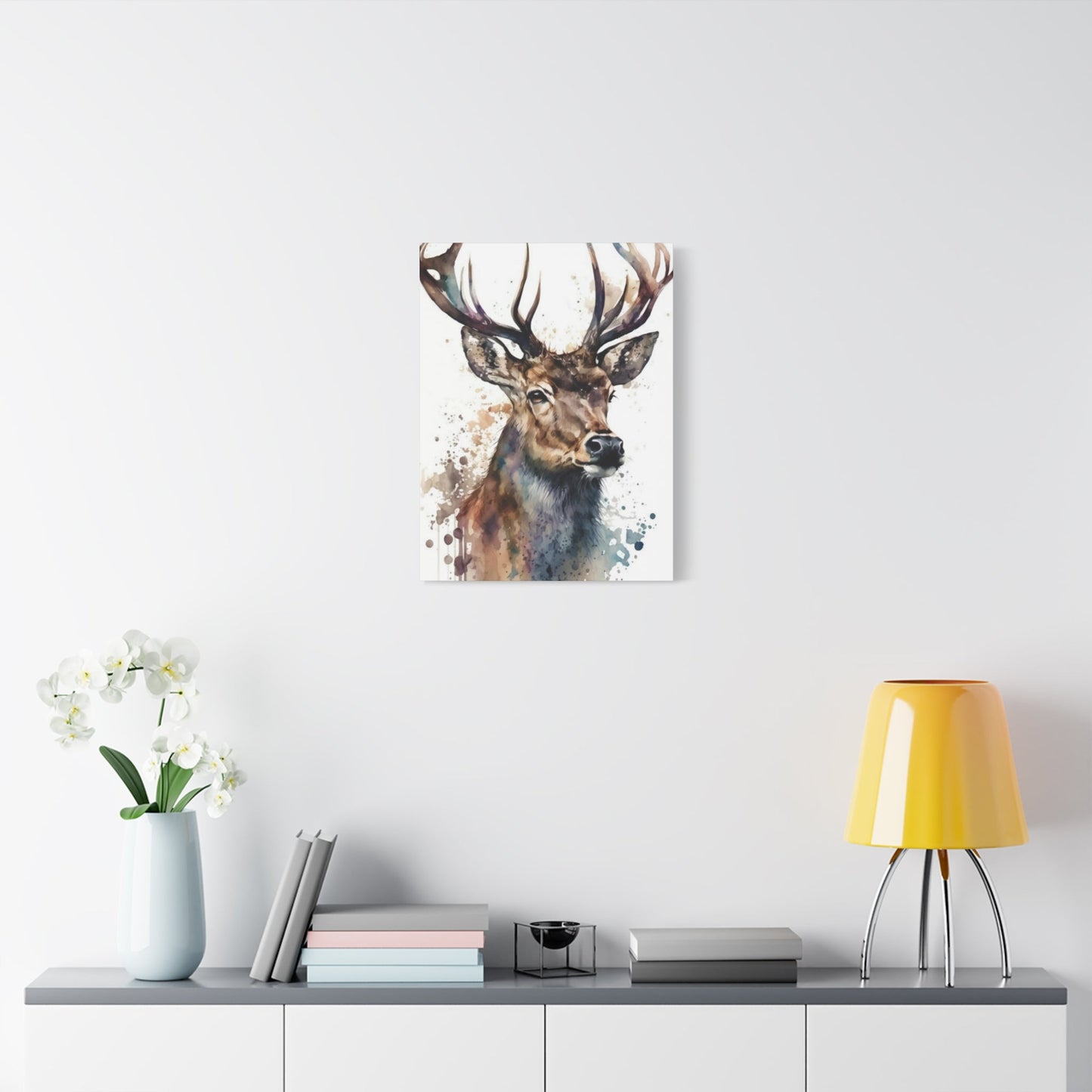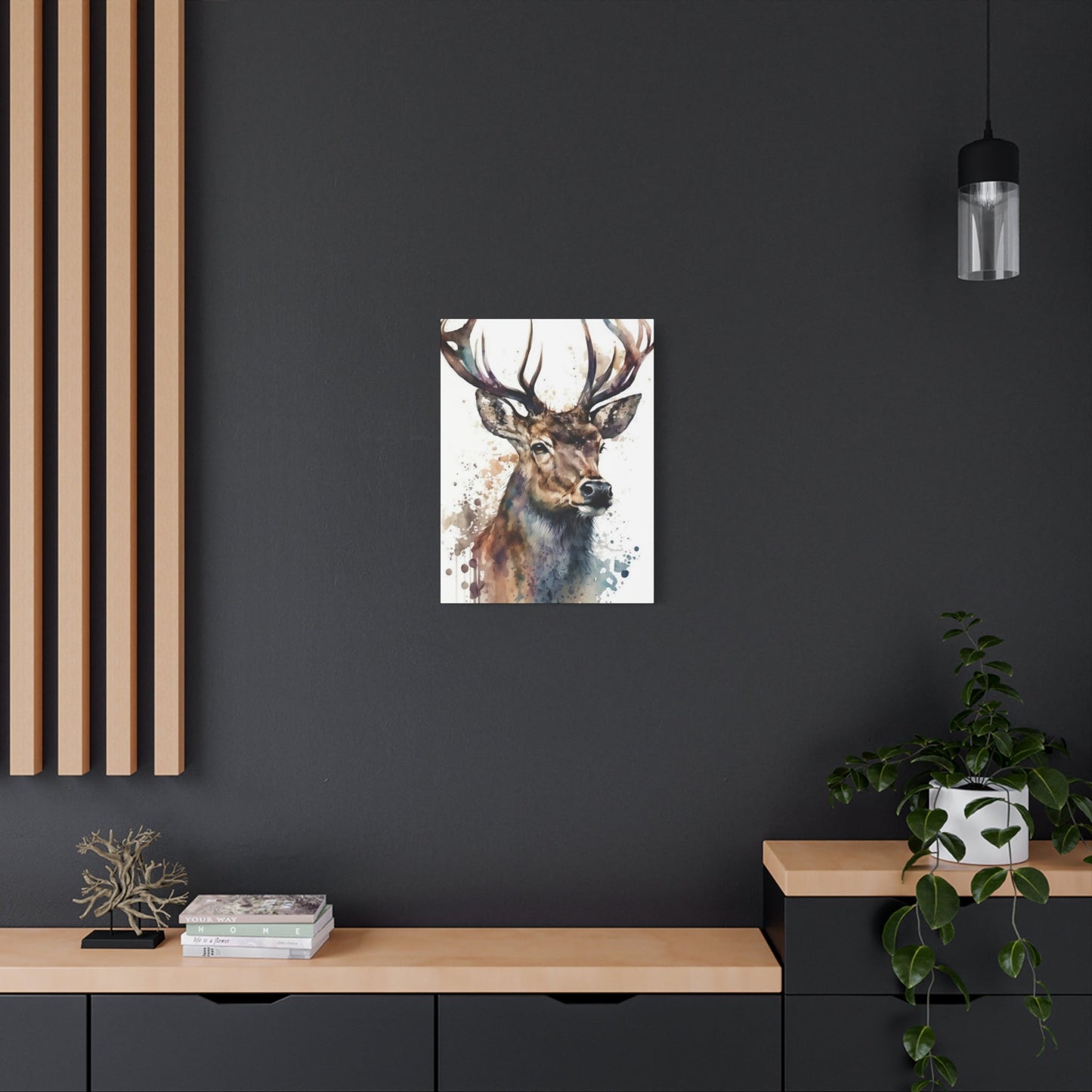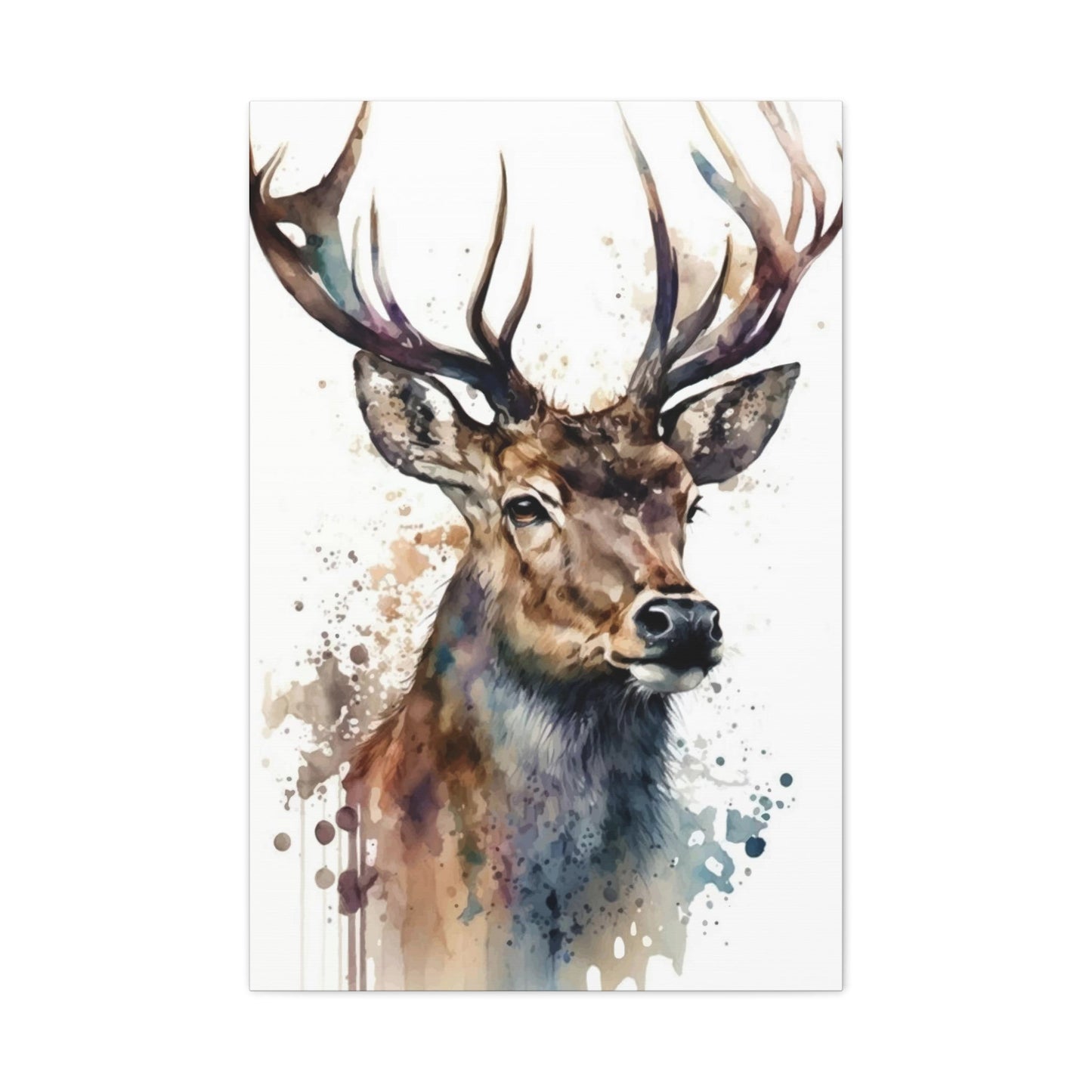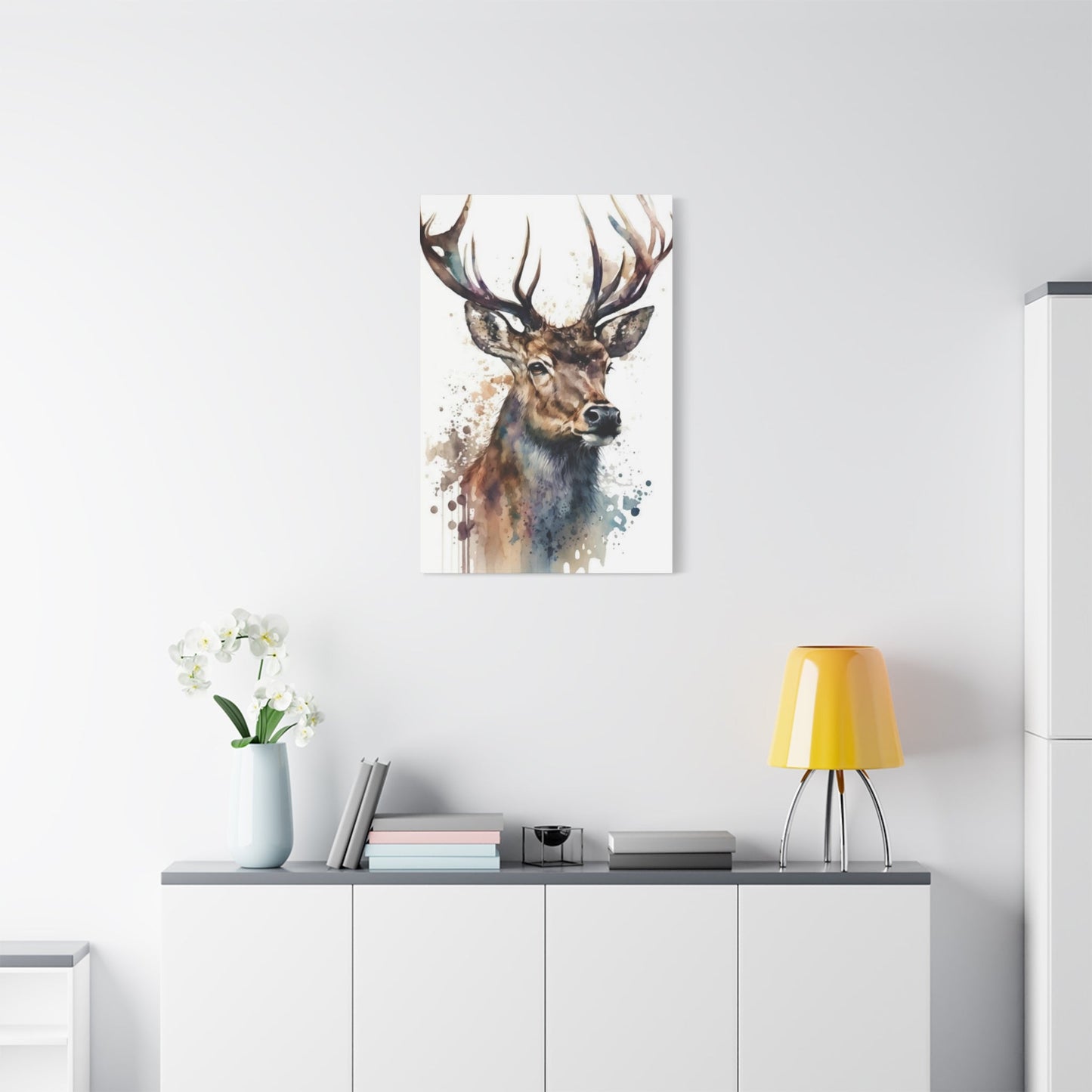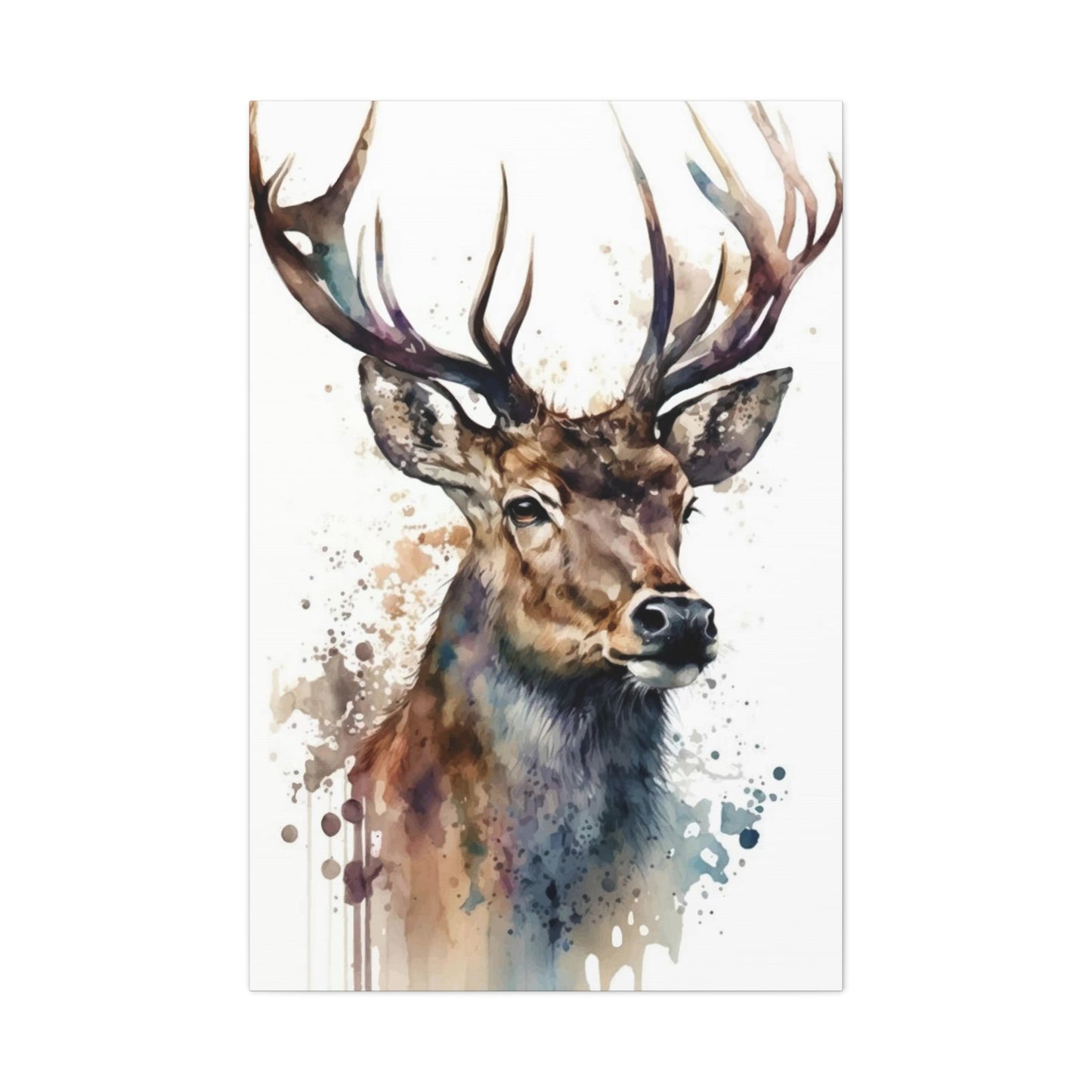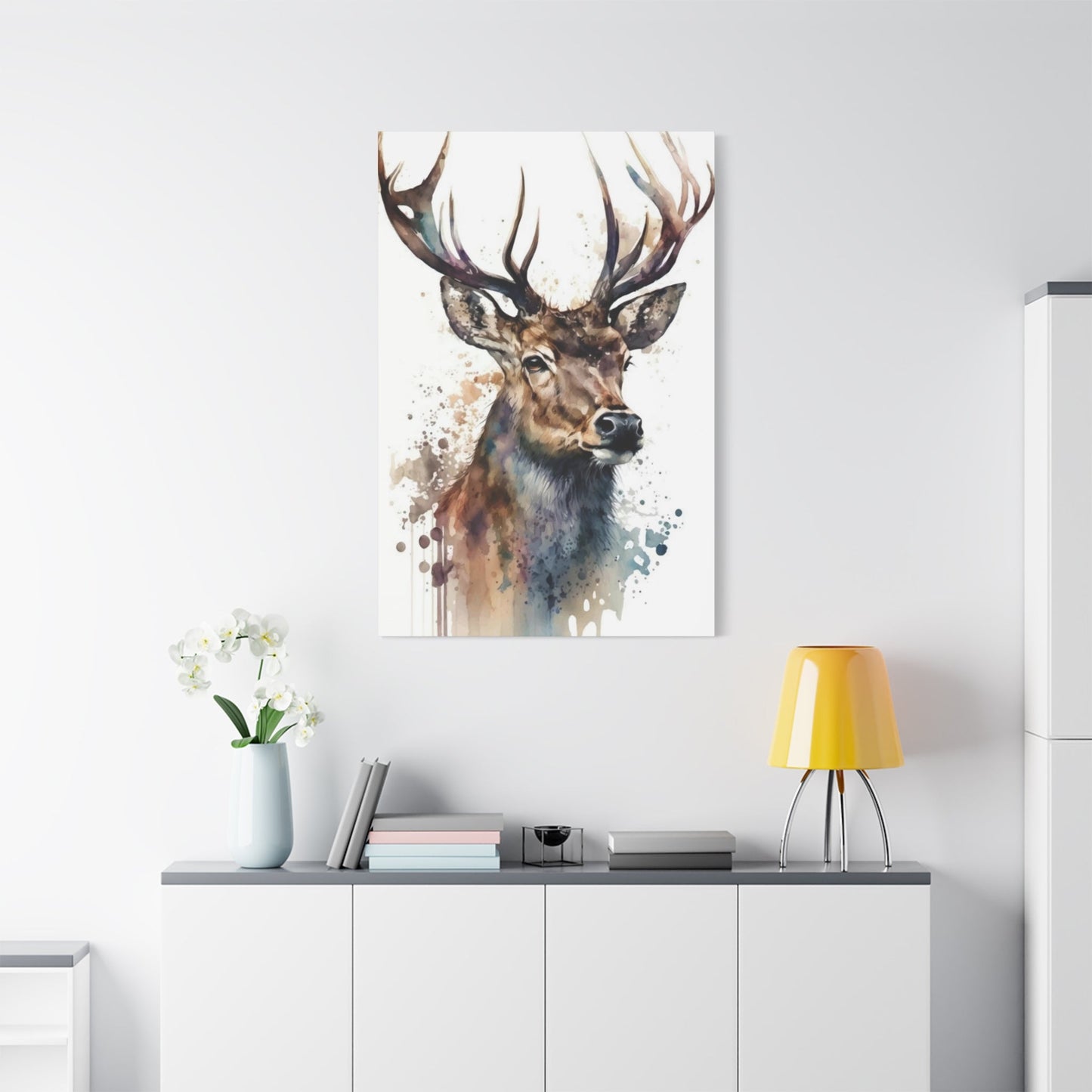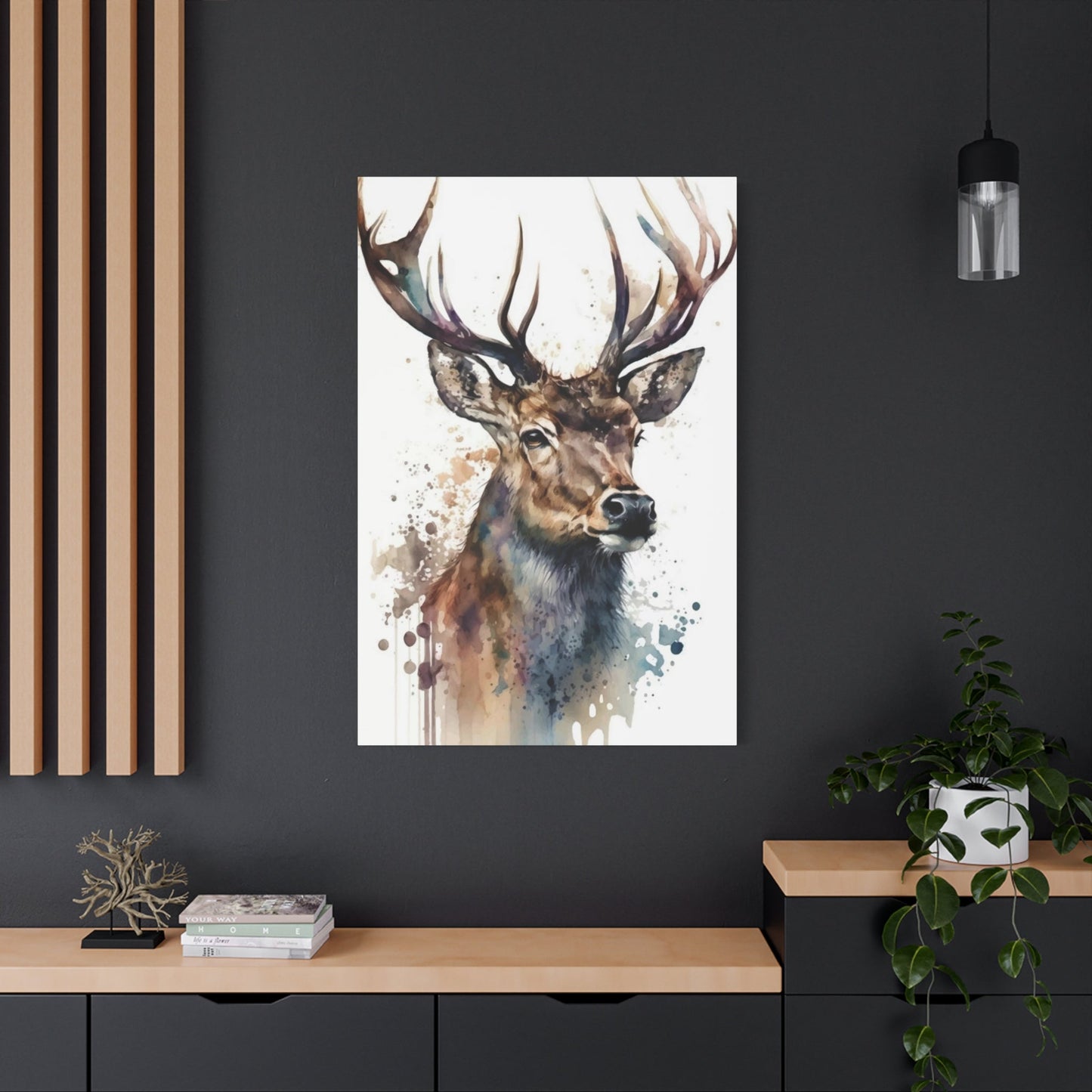Deer Wall Art: Elegance and Beauty from the Heart of Nature
Deer Wall Art captures the serene beauty, grace, and quiet majesty of one of nature’s most enchanting creatures. From the gentle gaze of a doe to the regal stance of a buck, deer symbolize elegance, vigilance, and the harmonious rhythms of the forest. Artists and designers translate this natural splendor into captivating wall art that not only enhances interior spaces but also fosters a deeper connection with the wilderness. Whether presented as paintings, canvas prints, metal sculptures, or mixed media, each piece celebrates the delicate balance between realism and artistic interpretation, offering viewers an immersive encounter with the natural world.
The appeal of deer wall art lies in its meticulous attention to detail and the ability to evoke emotion. Skilled artists observe the subtle movements, expressions, and posture of deer in their natural habitats, translating those observations into artworks that feel alive and authentic. Light and shadow, the texture of fur, and the seasonal hues of forests and meadows are carefully rendered to create depth and evoke the serenity of the wild. Beyond the visual beauty, deer wall art invites reflection, mindfulness, and a sense of calm. It allows viewers to momentarily step away from the bustle of daily life and immerse themselves in the peaceful, unhurried world of wildlife.
Symbolism plays a central role in deer-inspired artwork. Throughout history, deer have represented grace, renewal, gentleness, and intuitive awareness. Displaying deer art in a home or office space conveys not only aesthetic sophistication but also a subtle message of balance, harmony, and connection with nature. Whether a single deer standing quietly in a forest clearing or a family of deer moving gracefully together, the compositions often tell stories of movement, interaction, and the cyclical nature of life, encouraging repeated engagement and contemplation.
Deer wall art is versatile in design and placement, harmonizing with both modern and traditional interiors. Large statement pieces can serve as focal points, drawing attention and sparking conversation, while smaller prints or sculptures can complement existing decor, adding touches of elegance and tranquility. The art seamlessly integrates into living rooms, bedrooms, offices, and galleries, enriching spaces with the timeless beauty of wildlife.
Ultimately, Deer Wall Art celebrates the natural world while inspiring emotional and psychological connection. It transforms walls into windows to the forest, reminding viewers of the quiet majesty, resilience, and elegance of deer. By bringing the heart of nature indoors, this art form not only enhances interiors but also nurtures a sense of peace, reflection, and appreciation for life’s subtle, graceful wonders.
From Forest to Canvas: The Creative Impulse
The genesis of any Deer Art piece often begins in the forest itself. Artists spend hours, sometimes days, observing these creatures, noting not only their physical form but also the subtler nuances of behavior and interaction. The arch of a neck, the gentle flexion of antlers, or the flicker of an eye can become central motifs in an artwork. These observations provide a foundation for a creative process that is both meticulous and intuitive, blending careful study with interpretive flourish.
In many ways, Deer Art functions as a bridge between the human world and the natural realm. By translating these delicate forms into visual narratives, artists invite viewers to inhabit a space where wildlife is venerated not merely for its aesthetic qualities but for its symbolic resonance. Deer often signify renewal, intuition, and the delicate balance of ecosystems, themes that resonate profoundly in an era marked by environmental awareness and ecological concern. The interplay of these symbolic dimensions with the tangible aesthetics of the artwork creates a multilayered experience for the viewer, enriching both the intellectual and emotional engagement with the piece.
The Transformative Process of Crafting Deer Art
Creating Deer Art from raw materials is a process that demands both technical mastery and imaginative vision. Whether sculpted from metal, carved from wood, or painted on canvas, the artwork begins as a humble medium awaiting transformation. Metalwork, in particular, presents a fascinating interplay of force and finesse. Sheets of aluminum, copper, or steel are manipulated through hammering, cutting, and etching, gradually yielding forms that capture the subtle dynamism of a deer in motion. The very act of shaping these materials can be likened to a ritual, where each strike and bend imbues the artwork with vitality and character.
The process is not without its challenges. Metal possesses a rigidity that resists pliancy, requiring a careful orchestration of technique and patience. Artists often describe a sense of dialogue with the medium—a negotiation between the envisioned form and the material’s inherent properties. This dialectic is reminiscent of the relationship between human consciousness and the natural world, where compromise and adaptation are necessary to achieve harmony. The finished piece, therefore, is both a product of labor and a testament to the symbiosis between artist and medium.
Painting and mixed-media approaches offer alternative avenues for capturing the essence of deer. Watercolor and acrylics, for instance, allow for the subtle interplay of light and shadow, evoking the dappled luminescence of sunlight filtering through leaves. Each stroke of pigment can suggest texture, movement, and atmosphere, crafting a sensory experience that extends beyond mere visual appreciation. By juxtaposing different mediums, artists can create a layered narrative that encapsulates both the corporeal form of the deer and the intangible qualities of its forested environment.
Nature as a Palette and Guide
Deer Art is profoundly informed by the surrounding environment, which serves as both palette and muse. The forest offers a spectrum of hues, from the deep emerald of moss-covered trunks to the golden warmth of autumnal leaves. These natural tones are integrated into the artwork to evoke a sense of place and seasonality, creating a visual narrative that resonates with the rhythms of the wild. Beyond color, the textural and spatial qualities of nature—such as the roughness of bark, the softness of undergrowth, or the glimmering reflections on a pond—inform the composition, adding depth and nuance.
The careful study of light is also pivotal. The manner in which sunlight dances across a deer’s coat or casts intricate shadows beneath foliage can transform an ordinary scene into one imbued with ethereal beauty. Capturing this ephemeral interplay requires acute observation and an intuitive grasp of natural aesthetics. In many ways, the artist acts as both interpreter and translator, converting transient impressions into enduring forms that can be appreciated long after the moment has passed.
Incorporating these elements into Deer Art creates a multisensory experience. Viewers are invited to imagine the gentle rustle of leaves, the faint scent of forest floor, and the whisper of wind through branches. Such sensory evocation deepens engagement, fostering an emotional resonance that transcends the visual dimension and connects the observer more intimately with the natural world.
Symbolism and Emotional Resonance
Deer carry profound symbolic significance across cultures, representing grace, renewal, and intuitive awareness. In artistic contexts, these associations are magnified, offering layers of meaning beyond mere representation. A deer depicted mid-leap might suggest liberation and fluidity, while a serene stag standing in dappled sunlight can evoke reflection, vigilance, and wisdom. These symbolic dimensions enrich the viewer’s experience, allowing each encounter with Deer Art to be simultaneously aesthetic and contemplative.
Emotional resonance is central to the impact of Deer Art. By invoking the elegance and serenity of the deer, artworks create a contemplative space, encouraging introspection and mindfulness. In modern urban environments, where exposure to nature can be limited, such art serves as a conduit, transporting viewers to quieter, more harmonious spaces. The presence of a well-crafted deer motif can instill a sense of calm and rejuvenation, reminding individuals of the beauty and interconnectedness inherent in the natural world.
Personal Connection and Artistic Reflection
For artists, the act of creating Deer Art is as much about personal reflection as it is about crafting objects of beauty. Engaging with the subject matter invites introspection, allowing the artist to consider their own relationship with nature, impermanence, and the cycles of life. This reflective process imbues each piece with authenticity, creating an artwork that resonates not only visually but emotionally.
Many artists describe a meditative quality to the creative process. The hours spent observing deer, sketching forms, and refining details are interspersed with moments of quiet revelation, where inspiration emerges organically. These moments, fleeting yet potent, often define the character of the final work. In this sense, Deer Art embodies both a narrative of the forest and a chronicle of the artist’s inner journey—a duality that enhances its depth and significance.
The Aesthetic Impact of Deer Art
Beyond symbolism and craftsmanship, Deer Art exerts a profound aesthetic influence on interior spaces. The introduction of wildlife imagery, particularly in three-dimensional or texturally rich forms, alters spatial perception and ambiance. A deer sculpture or wall installation can act as a focal point, commanding attention while simultaneously integrating seamlessly into the surrounding environment. Its presence can transform ordinary rooms into sanctuaries of reflection, imbuing domestic or professional spaces with a sense of harmony, poise, and vitality.
Moreover, the juxtaposition of natural motifs with contemporary design elements can create a compelling dialogue between tradition and modernity. Metalwork, for instance, offers sleekness and durability while retaining organic fluidity, bridging the gap between wilderness inspiration and urban living contexts. Similarly, mixed-media approaches can combine tactile and visual textures, offering viewers a multi-dimensional experience that engages sight, touch, and imagination simultaneously.
Deer Art represents a confluence of observation, creativity, and philosophical reflection. Rooted in the fascination with wildlife and forested landscapes, it transcends mere decoration, offering viewers a portal into a world of subtle beauty, introspection, and sensory engagement. The creation of these works demands not only technical expertise but also a profound empathy with the natural world, translating ephemeral moments into enduring art forms.
Through careful study of light, texture, and form, coupled with a deep appreciation of symbolic resonance, Deer Art achieves a unique synthesis of aesthetic allure and contemplative depth. Whether rendered in metal, paint, or mixed media, these works invite viewers to pause, reflect, and reconnect with the silent majesty of the forest and its graceful denizens. In doing so, Deer Art continues to captivate and inspire, affirming the enduring human desire to celebrate and preserve the delicate wonders of the natural world.
Immersing in the Forest: Observation as Artistic Foundation
The creation of Deer Art begins long before the first sketch or metal cut; it starts in the forest itself. Immersing oneself in a natural habitat is fundamental for capturing the subtleties of wildlife behavior, light, and atmosphere. Artists often spend hours or days quietly observing deer, learning to anticipate their movements, understand their habits, and notice the ephemeral interplay between animal and environment. This observational phase is crucial, for it provides the nuanced insights that distinguish lifelike representations from mere anatomical sketches.
Witnessing a deer in its natural surroundings is an experience that transcends visual engagement. The artist becomes attuned to the auditory and olfactory subtleties of the environment: the faint rustle of leaves underfoot, the subtle musk of moss and loam, and the distant calls of birds weaving through the canopy. Every element contributes to a heightened awareness, informing the aesthetic choices that will later shape the artwork. By internalizing these details, artists are able to translate not only the physicality of the deer but also the ethereal essence of its woodland domain into their creations.
Observation in nature demands patience and attentiveness. Deer are highly perceptive and skittish animals; they respond instantaneously to the slightest disturbance. To capture their authenticity, an artist must move with deliberation, learn to blend into the surroundings, and cultivate a state of quietude that mirrors the serenity of the forest. This meditative practice fosters a deep connection with the subject and encourages a contemplative approach to art-making that is at once introspective and profoundly connected to the natural world.
Translating Observation into Concept
Once the artist has absorbed the subtleties of movement, light, and form, the next phase involves conceptualization. This is a delicate balance between fidelity to reality and creative interpretation. Artists consider how best to convey not only the physical presence of a deer but also the intangible qualities that evoke wonder—grace, vigilance, and quiet strength. A single gesture of the deer’s neck, the tension in its muscles, or the shimmer of reflected sunlight on its coat can become the focal point of an entire composition.
Conceptualization often begins with preliminary sketches, studies in shadow and form, or small-scale maquettes for three-dimensional work. These serve as exploratory tools, allowing the artist to experiment with perspective, proportion, and composition. They also enable a dialogue between the intuitive and the analytical: the artist may adjust antler curvature, body stance, or spatial relationships to enhance narrative flow or emotional impact. This process ensures that every subsequent step in materializing the artwork is informed by a coherent and expressive vision.
In addition, the conceptual phase involves selecting the medium through which the artwork will come to life. Each material—metal, wood, canvas, or mixed media—possesses inherent qualities that influence form, texture, and mood. Metal, for example, conveys resilience, permanence, and luminosity, while wood offers warmth, tactility, and organic irregularity. Canvas allows for fluidity and modulation of color, creating a sense of atmosphere and movement. Understanding the strengths and limitations of each medium is essential for transforming observation into a compelling, multi-dimensional piece of Deer Art.
Crafting with Precision: The Material Transformation
Once a concept is fully developed, the physical creation begins. In metal-based Deer Art, the transformation of raw materials into graceful forms is an intricate process that requires both technical expertise and intuitive artistry. Sheets of aluminum or steel are cut, shaped, and etched with painstaking precision. Each strike of a hammer, each careful bend, and each deliberate incision contributes to the emergence of a form that is simultaneously dynamic and harmonious.
The process is immersive and, in many respects, ritualistic. Artists often describe entering a flow state where the rhythm of hammering, filing, or polishing feels in sync with the imagined movements of the deer. There is an almost musical quality to the work: the reverberations of metal, the soft scrape of tools, and the subtle changes in light and shadow as surfaces curve and catch the eye. This sensorial engagement transforms the act of creation into a performance—a dialogue between the material and the artist, where the final piece carries the imprints of this dynamic interplay.
Metalwork is particularly suited to capturing the nuanced musculature and elegant contours of deer. The medium’s reflective properties allow for a play of light and shadow that enhances the perception of motion, even in a static piece. Etching or texturing techniques can replicate the dappling of sunlight on fur, the subtle striations of antlers, or the delicate outlines of foliage in the background. This meticulous attention to detail ensures that the resulting artwork resonates with both realism and poetic grace, inviting viewers to immerse themselves in the visual narrative.
Harnessing Nature’s Chromatic Symphony
Color plays a pivotal role in Deer Art, shaping both mood and narrative. Artists draw inspiration from the natural palette of the forest: the muted umbers and ochres of tree bark, the jade and viridian of foliage, and the amber or russet hues of deer coats illuminated by sunlight. The interplay of these colors is used to evoke seasonality, time of day, and atmospheric conditions, transforming a simple representation into a vivid, emotionally resonant experience.
Beyond naturalism, the judicious use of contrast and saturation can imbue a piece with drama and intensity. Deep shadows beneath the forest canopy juxtaposed with the luminous sheen on a deer’s flanks can create a sense of depth and dimensionality. Subtle gradients of color might suggest movement, guiding the viewer’s gaze along the contours of the animal and through the surrounding environment. In this way, color becomes not merely decorative but narrative, conveying mood, tension, and serenity with equal potency.
Artists often experiment with unconventional hues or layered textures to evoke a sense of wonder or surrealism. For instance, metallic patinas may introduce an iridescent shimmer reminiscent of moonlight on dew-laden leaves, while layered glazes on canvas can simulate the refracted light filtering through branches. These techniques elevate Deer Art from mere representation to a multisensory experience, one that engages the imagination as deeply as it does the eye.
The Symbiosis of Form and Symbol
Deer Art is imbued with symbolic resonance, reflecting cultural associations, personal interpretations, and universal themes. Across civilizations, deer have been regarded as emblems of gentleness, vigilance, spiritual guidance, and the cyclical rhythms of life. This symbolism is interwoven into artistic compositions, enriching the viewer’s engagement with layers of meaning that transcend visual appeal.
The physical form of the deer—the poised stance, the arc of antlers, or the subtle tension in its muscles—often conveys these symbolic dimensions. A leaping fawn may suggest freedom, renewal, and nascent vitality, whereas a solitary stag standing against a backdrop of twilight evokes introspection, wisdom, and resilience. By harmonizing form and symbolism, Deer Art becomes both a visual and conceptual experience, inviting contemplation and emotional resonance.
Emotional impact is heightened when artists integrate environmental context into the composition. Surrounding foliage, streams, and glades are not mere backdrops; they are integral to the narrative, situating the deer within a broader ecological and philosophical framework. This contextualization reinforces the interconnectedness of all elements in the scene, mirroring the intricate relationships inherent in natural ecosystems. The result is an artwork that speaks not only of a single animal but of the forest as a living, breathing entity, inviting viewers to consider their place within it.
The Transformative Power of Deer Art in Interior Spaces
Deer Art extends its influence beyond aesthetic enjoyment, transforming the environments in which it is displayed. When placed within a living space, a Deer Art piece can recalibrate the mood, instill serenity, and foster a contemplative atmosphere. Its presence acts as a conduit to nature, offering a visual sanctuary in urban or indoor settings where direct contact with wildlife may be limited.
The transformative effect is particularly pronounced with three-dimensional or textured works. Metal sculptures, for instance, reflect ambient light and create shifting shadows that animate the room, producing a dynamic interplay reminiscent of sunlight filtering through the forest canopy. Paintings and mixed-media works similarly engage the viewer’s perception, guiding the gaze through layers of color, form, and implied movement. In both cases, Deer Art functions as an immersive portal, transporting observers into a liminal space where tranquility and reflection are paramount.
Interior placement also allows for narrative curation. A single deer artwork might serve as a focal point, commanding attention and setting the tone for the space, while a series of complementary pieces can create a visual rhythm reminiscent of a forest trail. This thoughtful integration of art and environment underscores the capacity of Deer Art to harmonize human habitats with the aesthetics and spirit of the natural world.
Bridging the Gap Between Observer and Wilderness
One of the most compelling aspects of Deer Art is its capacity to foster a sense of connection between human observers and the wilderness. In modern life, direct encounters with deer and other wildlife are increasingly rare, making artistic representations vital for maintaining awareness and appreciation of natural beauty. Deer Art bridges this gap, offering a tangible interface through which the viewer can engage with the forest’s majesty.
This connection is reinforced by the sensory and emotional cues embedded within the artwork. The curvature of antlers, the tilt of a head, and the positioning within a forested backdrop all communicate subtle narratives, encouraging reflection and empathy. Observers may find themselves recalling personal experiences in nature or imagining new encounters, creating a cyclical exchange of inspiration between art and life. In this sense, Deer Art is not static; it is participatory, inviting continual interpretation and engagement.
As artists navigate the delicate interplay between medium, observation, and imaginative interpretation, they craft works that not only capture the majesty of deer but also invite reflection on the deeper connections between humans and the wild. Through these creations, Deer Art continues to inspire, transform spaces, and cultivate an enduring appreciation for the elegance and subtle power of the natural world.
Evoking Emotion Through Deer Art
Art possesses the extraordinary ability to evoke emotion, and Deer Art is no exception. Beyond the depiction of physical forms, it captures the essence of the forest’s tranquility and the quiet majesty of its inhabitants. Each artwork serves as a vessel for feeling—a gentle invitation to experience awe, reverence, and introspection. The emotional resonance of Deer Art stems from its capacity to synthesize observation, imagination, and symbolism into a harmonious whole.
Artists often focus on subtleties of posture, gaze, and movement to convey emotion. A fawn timidly stepping into a glade may elicit a sense of innocence and vulnerability, while a solitary stag standing alert at dusk evokes vigilance and silent strength. These nuanced portrayals allow viewers to connect not only with the visual narrative but also with the inner life of the animal, fostering empathy and a deeper appreciation for the delicate balance of the forest ecosystem.
The emotional impact of Deer Art is amplified when contextualized within its environment. Forest glades, rippling streams, and dappled sunlight all contribute layers of sensory richness, immersing the viewer in a scene that feels both alive and contemplative. These elements create a multidimensional experience in which emotion and observation intertwine, transforming mere aesthetic appreciation into profound engagement.
The Interplay of Light and Shadow
Light and shadow play an integral role in Deer Art, shaping perception, mood, and atmosphere. Observing deer in their natural habitat, artists often note the fleeting, mercurial quality of sunlight filtering through the canopy, casting complex patterns upon the forest floor and the animals themselves. Reproducing this interplay requires both technical skill and an intuitive understanding of nature’s rhythms.
In painting, subtle gradations of color can suggest the gentle diffusion of sunlight or the deep shadows beneath undergrowth. In metalwork, reflective surfaces and textured etching capture the way light glances off a deer’s flanks or the sheen of antlers. The dance of illumination and darkness not only adds realism but also infuses the artwork with dynamism, drawing the observer’s eye along deliberate pathways and heightening the sense of movement and vitality.
Artists often employ chiaroscuro techniques—contrasting light and dark—to emphasize form and depth. The resulting effect is one of immersion: the viewer feels the forest’s presence, the air charged with quiet life, and the deer poised within it. This careful modulation of light and shadow transforms static representations into living experiences, where every glance reveals new facets of texture, silhouette, and narrative.
Texture and Tactility in Deer Art
Texture is another critical dimension in Deer Art, enhancing both visual and emotional engagement. Through tactile variation, artists replicate the physical qualities of the forest and the animals inhabiting it. In metalwork, techniques such as embossing, engraving, and patination allow surfaces to capture the intricate patterns of fur, bark, and foliage. In mixed-media approaches, layering materials can suggest depth, complexity, and the interplay of natural elements.
The tactile dimension extends beyond touch; it influences perception. Roughened surfaces may evoke the ruggedness of a woodland trail, while smooth, polished contours suggest the sleek grace of a deer’s form. The combination of visual and implied tactile cues invites viewers to imagine themselves within the scene, creating a sense of participation and immersion that elevates the artwork beyond mere observation.
Texture also conveys movement and vitality. The subtle ridges on a deer’s antlers, the gentle undulation of muscle beneath fur, or the uneven ground of a forest glade all contribute to the sense that the scene is alive and breathing. By emphasizing these details, artists can transform a static medium into a narrative that embodies energy, poise, and natural rhythm.
Integrating Landscape and Narrative
A defining characteristic of Deer Art is its integration of landscape, creating a narrative that situates the animal within its ecological and symbolic context. Forests, meadows, streams, and mountains serve not as mere backgrounds but as active participants in the storytelling. Their shapes, textures, and tones interact with the deer to convey movement, hierarchy, and relationship within the natural world.
Narrative composition often incorporates elements of motion or temporal progression. A deer leaping across a stream, a fawn exploring a glade, or a stag surveying a twilight horizon tells a story of survival, curiosity, or introspection. The surrounding environment amplifies these narratives, offering visual cues that suggest wind, light, and seasonal conditions. By weaving animals and landsfcape into a coherent tableau, Deer Art transcends illustration, creating immersive experiences that communicate both beauty and meaning.
The Meditative Practice of Creating Deer Art
For artists, the act of crafting Deer Art is profoundly meditative. The extended focus required to observe deer, study light, manipulate materials, and refine details fosters a heightened state of awareness and reflection. This mindful engagement nurtures patience, precision, and a deepened connection with both subject and medium. Many artists report that the process itself is as rewarding as the final product, offering an intimate dialogue with nature and an opportunity for personal growth.
This meditative quality extends to viewers as well. Encountering Deer Art in a home, gallery, or naturalistic setting encourages contemplation and a sense of tranquility. The visual rhythm, interplay of light and shadow, and nuanced depiction of animal behavior create a serene environment conducive to reflection. In this sense, Deer Art functions not only as decoration but also as a catalyst for emotional and cognitive engagement, fostering mindfulness and a renewed awareness of the natural world.
Deer Art as a Portal to Nature
Art has the remarkable ability to transport observers to places and moments beyond the immediate environment, and Deer Art exemplifies this power. By capturing the elegance, vigilance, and quiet majesty of deer within forested or naturalistic landscapes, artists create portals to a wilderness experience that might otherwise be inaccessible in urban or indoor settings. The artwork becomes a bridge between human habitation and the wild, offering a meditative connection to forests, glades, and meadows.
This portal function is achieved through meticulous attention to detail, compositional choices, and the interplay of light, shadow, and texture. Each brushstroke, cut, or engraved line carries intention, inviting the observer to imagine the rustle of leaves, the soft murmur of streams, and the delicate footfall of deer moving through dappled sunlight. In this way, Deer Art engages multiple senses simultaneously, creating an immersive experience that transcends conventional observation and evokes the essence of being in nature.
Crafting Tranquility in Living Spaces
One of the most profound impacts of Deer Art lies in its ability to transform interior spaces into sanctuaries of serenity. A well-placed piece can recalibrate the mood of a room, fostering a sense of calm, contemplation, and aesthetic harmony. Whether displayed above a fireplace, in a study, or within a corridor, Deer Art introduces a subtle yet potent narrative of natural balance and quietude.
The transformative effect is particularly pronounced when artworks incorporate dynamic elements, such as reflective surfaces in metal sculptures or layered textures in mixed-media pieces. These elements interact with ambient light, producing a living interplay of shadows and highlights that echo the natural rhythms of the forest. Observers may find that even a brief glance at such a piece evokes relaxation, introspection, and a momentary escape from the pace and pressures of everyday life.
Furthermore, Deer Art encourages a mindfulness that extends beyond visual appreciation. Its presence can create spaces conducive to reading, meditation, or quiet conversation, where the aesthetic and emotional resonance of the artwork guides thought and attention. The act of inhabiting a space enriched by Deer Art becomes itself an immersive experience, where the boundary between interior environment and natural inspiration blurs.
Integrating Deer Art with Contemporary Spaces
While Deer Art is deeply rooted in natural observation and traditional motifs, it also harmonizes with contemporary design. Artists often experiment with abstraction, stylization, and mixed materials to create works that resonate with modern interiors while maintaining fidelity to the essence of the deer and its environment. Metal sculptures, for example, offer sleek lines and reflective surfaces that complement minimalist spaces, while layered canvases can integrate seamlessly with eclectic or textured decor.
This integration demonstrates the versatility of Deer Art. It can function as a statement piece, commanding attention and defining spatial aesthetics, or as a subtle enhancement that contributes to ambiance and cohesion. Regardless of placement, the underlying narrative of natural beauty, grace, and contemplation remains central, ensuring that the artwork maintains its emotive and symbolic resonance even in modern, urbanized settings.
Narrative Through Grouping and Series
Artists frequently explore narrative by creating series or groupings of Deer Art pieces. Depicting multiple deer within a cohesive visual framework allows for exploration of social dynamics, seasonal progression, or movement through landscapes. A series of fawns exploring a meadow may suggest innocence and curiosity, while a grouping of stags conveys hierarchy, vigilance, and collective strength.
Such compositions invite viewers to engage with multiple layers of narrative, observing relationships between individuals, their environment, and the passage of time. Groupings can also guide the flow of a space, creating visual rhythm and enhancing the immersive quality of the environment. Through this narrative structuring, Deer Art transcends static depiction, becoming a medium for storytelling, ecological reflection, and contemplative exploration.
The Enduring Appeal of Deer Art
The appeal of Deer Art lies in its capacity to balance representation, symbolism, and immersive storytelling. Observers are drawn not only to the aesthetic elegance of the animal but also to the layers of meaning, emotional resonance, and sensory engagement embedded within the work. Whether created through metalwork, painting, or mixed media, each piece offers a portal to nature, a narrative of grace and vigilance, and a space for reflection.
Its versatility ensures that Deer Art remains relevant across contexts, from traditional forest-inspired interiors to contemporary urban environments. Its integration of form, color, texture, and narrative allows for continual reinterpretation, ensuring that each encounter is unique, emotionally engaging, and intellectually stimulating.
Conclusion
Deer Art represents a profound convergence of observation, creativity, and emotional resonance, capturing not only the visual elegance of deer but also the deeper symbolism and serenity of the natural world they inhabit. Across this article, we have explored how artists immerse themselves in forests, meadows, and other natural habitats, attentively studying the subtle movements, posture, and expressions of deer, as well as the interplay of light, shadow, and seasonal changes. This meticulous observation informs both the conceptual and technical aspects of each artwork, whether rendered in metal, wood, canvas, or mixed media, ensuring that every detail—from the graceful curvature of antlers to the delicate sheen of sunlight on fur—is imbued with authenticity, vitality, and an almost palpable sense of presence. Such dedication transforms each piece into a window through which viewers can experience the quiet majesty of the wilderness.
Beyond technical mastery, Deer Art resonates profoundly on an emotional and symbolic level, inviting viewers to experience tranquility, introspection, and a renewed connection with nature. Through texture, color, and thoughtful composition, these works evoke sensory and emotional responses that allow observers to feel the gentle rustle of leaves, the soft, watchful gaze of deer, and the stillness of untouched forest landscapes. Symbolically, deer embody grace, vigilance, renewal, and the cyclical rhythms of life, enriching each artwork with layers of meaning that transcend mere visual appeal. The art encourages mindfulness, reflection, and a heightened awareness of the natural world, cultivating a sense of reverence and respect for the delicate balance of life.
Deer Art also plays a transformative role in shaping interior spaces, harmonizing effortlessly with both traditional and contemporary design aesthetics. Sculptures, wall art, and paintings act as focal points or ambient enhancers, instilling calm, narrative depth, and a touch of wilderness into homes, studios, offices, and galleries alike. Through the use of scale, perspective, and thematic grouping, these artworks tell compelling stories of movement, community, and the cyclical patterns of life, inviting repeated engagement and contemplation. Their presence enriches environments, not merely decorating walls but fostering an atmosphere of serenity, inspiration, and connection to the natural world.
Ultimately, Deer Art is far more than aesthetic decoration; it is a meditation on the enduring relationship between humans and nature. By preserving the fleeting beauty of wildlife, it fosters emotional and psychological connection, celebrates the quiet, timeless elegance of deer, and serves as a reminder of the wonder, harmony, and resilience present in the natural world. Each piece encourages observers to pause, reflect, and reconnect with the delicate interplay between life, environment, and art, offering both inspiration and solace in a world increasingly removed from nature’s gentle rhythms.













